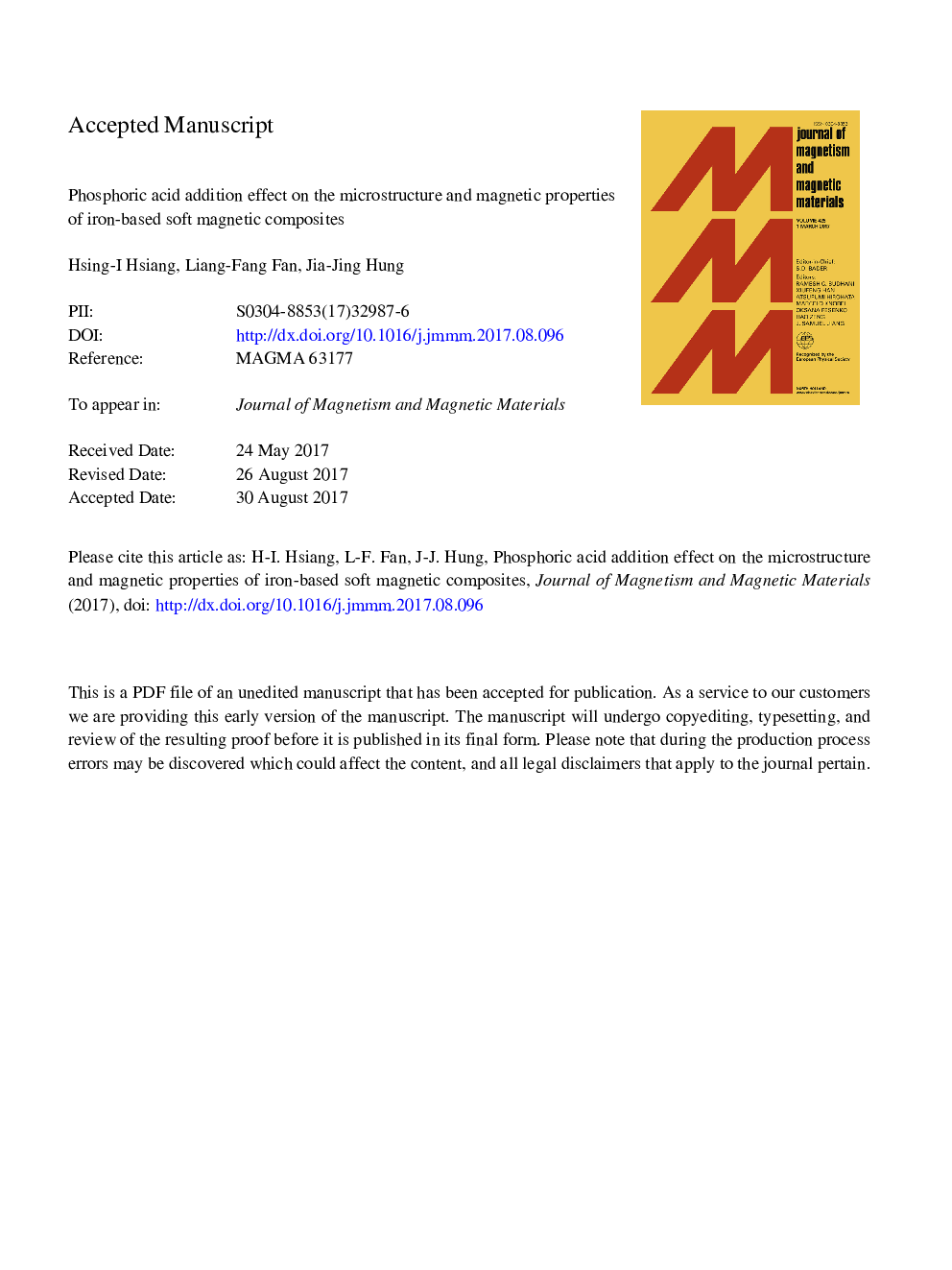| Article ID | Journal | Published Year | Pages | File Type |
|---|---|---|---|---|
| 5490147 | Journal of Magnetism and Magnetic Materials | 2018 | 39 Pages |
Abstract
The phosphoric acid addition effect on phosphate insulation coating microstructure was investigated in this study. The relationships between the phosphate insulation coating microstructure and temperature resistance, corrosion resistance and magnetic properties of iron-based soft magnetic composites (SMCs) were studied by using SEM, TEM/EDS and FTIR. It was observed that an iron phosphate/carbonyl iron core/shell structure is formed with carbonyl iron powder after phosphatizing treatment. The iron phosphate phase was identified as amorphous and its thickness increased from 30Â nm to 60Â nm as the phosphoric acid concentration was increased from 1Â wt% to 2Â wt%. When the phosphoric acid concentration was further increased to 5Â wt%, the excess iron phosphate precipitates between the soft magnetic composite particles. The temperature and corrosion resistance and resistivity of the iron-based SMCs can be effectively improved using carbonyl iron powders after phosphatizing. The initial permeability of the iron-based SMCs decreased with increasing phosphoric acid concentration due to thicker insulation layer formation. However, the imaginary permeability below the domain wall displacement resonance frequency decreased with increasing phosphoric acid concentration. The DC-bias superposition characteristic can also be improved by increasing the phosphoric acid concentration. Iron-based SMCs with superior temperature and corrosion resistance, initial permeability, magnetic loss and DC-bias superposition characteristics can be obtained by controlling the phosphoric acid concentration during phosphatizing to adjust the iron phosphate precipitate thickness on the iron powder surface.
Related Topics
Physical Sciences and Engineering
Physics and Astronomy
Condensed Matter Physics
Authors
Hsing-I Hsiang, Liang-Fang Fan, Jia-Jing Hung,
